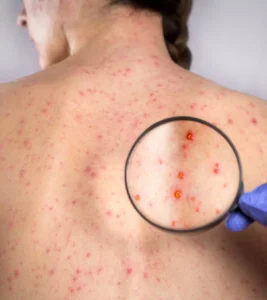The Measles-Rubella (M-R) Elimination Campaign for 2025–26 is targeting full immunisation coverage by delivering two doses of the M-R vaccine to all eligible children.

Understanding Measles
Measles is an extremely infectious viral illness that mainly affects young children. It can lead to severe complications or even death, particularly in undernourished children or those with weakened immune systems.
The disease is caused by a single-stranded RNA virus from the Morbillivirus genus, part of the Paramyxoviridae family, and exists in only one serotype.
Potential complications include pneumonia, encephalitis, severe diarrhoea, ear infections, and even blindness.
Measles is transmitted through droplets released when an infected person coughs or sneezes and continues to be a major cause of death from vaccine-preventable diseases worldwide.
Understanding Rubella
Rubella, often referred to as German Measles, is a relatively mild viral infection that typically affects children and young adults.
It is caused by the Rubella virus, which is an enveloped, single-stranded RNA virus distinct from the measles virus.
Although rubella is less contagious and less severe than measles, it becomes dangerous during pregnancy.
If a pregnant woman contracts rubella, it can result in Congenital Rubella Syndrome (CRS), which may cause permanent birth defects such as hearing loss, heart problems, and developmental delays.
While both measles and rubella can cause similar skin rashes, they are the result of different viruses.




